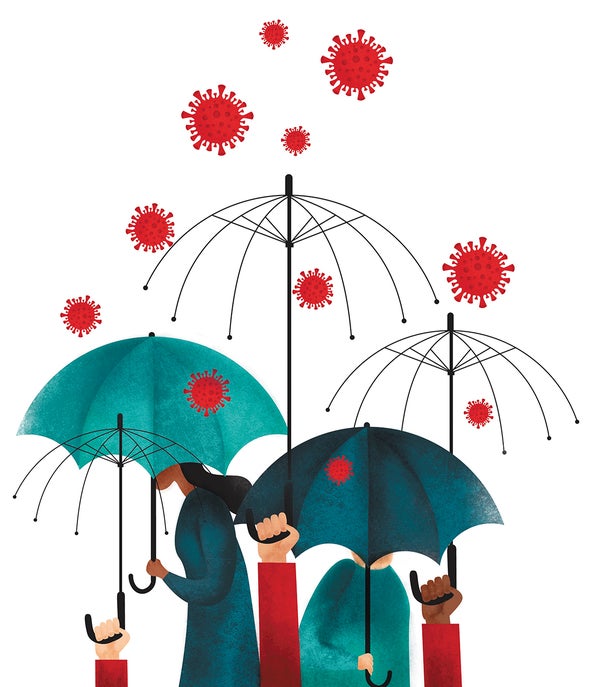Like billions of people around the world, I am eagerly awaiting my turn for a COVID vaccine. But not everyone shares my enthusiasm. My sister-in-law, an alternative health practitioner, says she doesn't trust “Big Pharma” to have formulated safe shots. She prefers to fortify her immune system with supplements and a healthy lifestyle. “I avoid all vaccines,” she told me.
She is not alone. By now the term “vaccine hesitancy” has entered everyday pandemic discourse, joining “flatten the curve” and “social distancing.” Polls in December 2020 suggested that about 30 percent of Americans harbor doubts about COVID vaccinations. If that number holds steady, unvaccinated people could form a deadly reservoir of the SARS-CoV-2 virus, able to restart outbreaks. We need a level of protection known as herd immunity, which experts estimate will require between 60 and 90 percent of the population to be vaccinated or have antibodies resulting from infection.
Vaccine reluctance looms large among certain subgroups: 42 percent of Republicans, 35 percent of Black adults and 33 percent of essential workers, for varying reasons, said they would probably or definitely refuse the vaccine in a December poll conducted by the Kaiser Family Foundation (KFF). Experts say efforts to overcome hesitancy should address specific concerns from these groups and include transparency about vaccine benefits and risks. Here are seven key ideas:
1. It's not necessary to change the minds of committed anti-vaxxers; they are just a tiny slice of the population, and we can reach herd immunity without them. Consider, for example, that in the 2018–2019 school year, only 2.5 percent of U.S. kindergartners were exempted from vaccination. “We are more interested in people who might be ambivalent,” says Rupali Limaye, a health communication scientist at the Johns Hopkins Bloomberg School of Public Health.
2. Facts alone will not persuade skeptics. A 2014 study of adults who worried that vaccination might cause autism—a debunked idea—found that corrective facts had no impact on their intentions to vaccinate a child. The information actually hardened negative views among those most opposed. “A more convincing approach is to address the lack of trust or reach people with trusted messengers rather than trying to throw facts and science at people,” says Brendan Nyhan, lead author of that study and a professor of government at Dartmouth College.
3. Some minority groups, such as Black and Native Americans, have strong historical reasons to view health authorities with suspicion. Experts favor working closely with civic and faith leaders, admired athletes and other trusted figures within those groups. This technique was first developed to promote practices that prevent HIV/AIDS among gay men and has since been adapted for other purposes and populations.
4. Low levels of vaccination, particularly among low-income communities, often reflect practical barriers. Offering extended hours for immunizations and ensuring that the public knows there is no cost are two ways to improve the rates, says Samantha Artiga, director of racial equity and health policy at KFF.
5. Talk about how popular the vaccine is. “It might be tempting to say, ‘Get your vaccine because half of Americans won't,’” says Katy Milkman, a behavioral scientist at the University of Pennsylvania, but that “emphasizes how common it is to decline the vaccine.” Research on voting turnout shows it is more effective to say everyone is doing it, she notes: “People follow perceived norms.”
6. Overcome the human tendency to procrastinate. A 2009 study at Rutgers University showed that people who were given an opt-out appointment for a flu shot were 36 percent more likely to be vaccinated than folks who were sent a link to schedule it themselves. Once the new vaccines are widely available, Limaye suggests health providers can say to patients who come in for other, more routine reasons, “Let's go ahead and get that COVID shot.”
7. For forgetful types, simple reminders—by text or voice message—can be powerful. A 2019 study showed that frequent daily reminders to complete drug treatment for tuberculosis greatly improved outcomes. “You'd think that would be irritating, but it was effective,” Milkman says. So when it comes time for that second COVID vaccine dose, she suggests, “Let's nag people.”

